Positions of large speculators according to the COT report as at 18/12/2020
Big speculators further raised bearish positions in the US dollar last week. Total net positions in the USD index fell by 7,600 contracts. This change is the result of a decrease in net long positions by 8,500 contracts and a decrease in net short positions by 900 contracts. The total net positions in the USD index have been negative for six weeks in a row.
The decline in total net positions occurred in the euro, the British pound, the Swiss franc and the Japanese yen.
The increase in total net positions was in the Australian and New Zealand dollars last week, as well as in the Canadian dollar.
The pound sterling is negatively affected by the still unresolved Brexit, where the risk of hard Brexit without agreement increases every day. Another current risk is the emergence of new coronavirus mutations leading to the highest levels of anti-epidemic measures in London.
The positions of speculators in individual currencies
Table 1: Total net positions of large speculators
| |
18.11.2020 |
11.12.2020 |
4.12.2020 |
27.11.2020 |
20.11.2020 |
13.11.2020 |
| USD index |
-14 100 |
-6 500 |
-3 100 |
-2 800 |
-1 000 |
-1 100 |
| EUR |
141 900 |
156 400 |
139 900 |
138 200 |
134 000 |
135 300 |
| GBP |
4 000 |
5 700 |
-7 900 |
-17 100 |
-19 700 |
-17 700 |
| AUD |
-9 300 |
-10 100 |
-10 800 |
-5 300 |
-6 100 |
-8 700 |
| NZD |
14 200 |
10 500 |
9 100 |
8 300 |
8 900 |
7 700 |
| CAD |
-15 700 |
-20 800 |
-21 200 |
-16 800 |
-20 400 |
-21 300 |
| CHF |
9 300 |
10 400 |
14 700 |
15 000 |
14 900 |
15 900 |
| JPY |
44 100 |
48 200 |
47 500 |
40 200 |
29 700 |
41 900 |
Notes:
Large speculators are traders who trade large volumes of futures contracts, which, if the required limits are met, must be reported to the Commodity Futures Trading Commission. Typically, this includes traders such as funds or large banks. These traders mostly focus on trading of long-term trends.
Total net positions are the difference between the number of bullish long contracts and the number of bearish short contracts. The data is published every Friday and is delayed because it shows the status on Tuesday of the week.
The sentiment of large speculators will allow you to see what position this group occupies in the market. It is important to monitor the overall trend of total net positions, but also separately the trend of bearish short positions and the trend of bullish long positions. Extreme values of total net positions are also important as they often serve as signals of a trend reversal.
It is also important to monitor the turning points, when the total net positions change from bullish sentiment to bearish and vice versa. These inflection points are indicated in the graphs in section 3.
Strength of individual currencies for the period of last 3 years
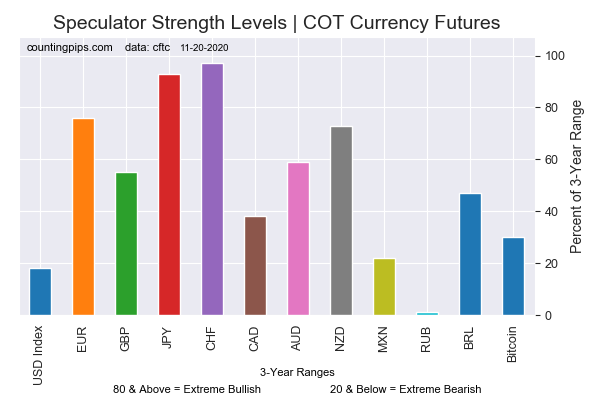 Figure 1: The strength of currencies according to speculators, source: www.countingpips.com
Figure 1: The strength of currencies according to speculators, source: www.countingpips.com
The chart compares the current value of the total net positions of large speculators with the value 3 years ago. A score of 0% means that speculators are at their lowest levels in 3 years. A score of 100% means that speculators are at the highest values in the last 3 years. A value of 80% or more means that speculators are extremely bullish, and a value of 20% or less means that speculators are extremely bearish.
Detailed analysis of selected currencies
Explanations:
-
Purple line and histogram in the chart window: this is information on the overall net position of large speculators.
-
Green linein the indicator window: these are the bullish positions of large speculators.
-
Red line in the indicator window: indicates the bearish positions of large speculators.
If there is a green line above the red line in the indicator window, then it means that the overall net positions are positive, i.e. that bullish sentiment prevails. If, on the other hand, the green line is below the red line, then bearish sentiment prevails and the overall net positions of the big speculators are negative.
Charts are made with the use of www.tradingview.com.
The Euro
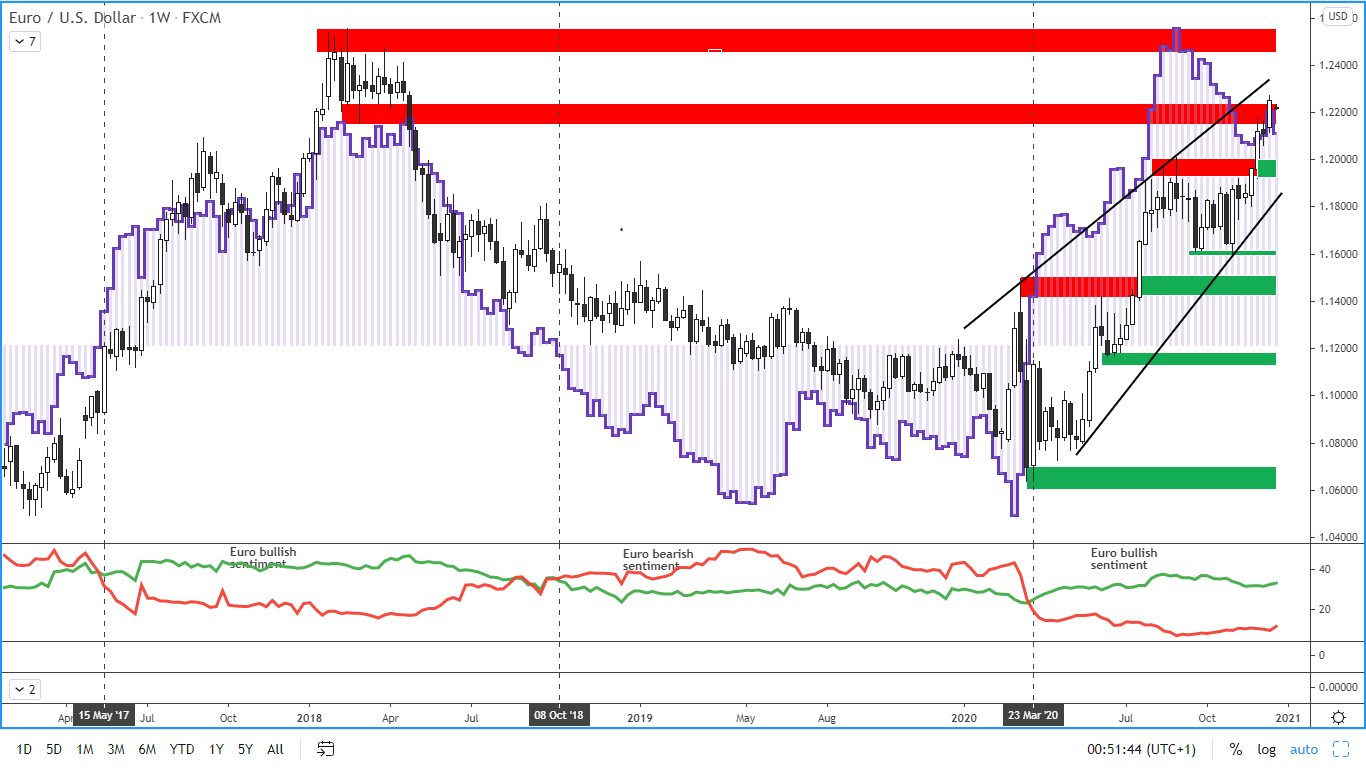 Figure 2: The euro and COT positions of large speculators on a weekly chart
Figure 2: The euro and COT positions of large speculators on a weekly chart
The price of the euro last week broke the set level of resistance at 1.2250. Currently, however, it is moving again below this level.
Total net positions fell by 14,500 contracts last week. This change is the result of a decrease in the net long positions of 3,700 contracts and an increase in net short positions by 10,800 contracts.
Long-term resistance: 1.2150 - 1.2250
Long-term support: 1.1950 - 1.2000
The British pound
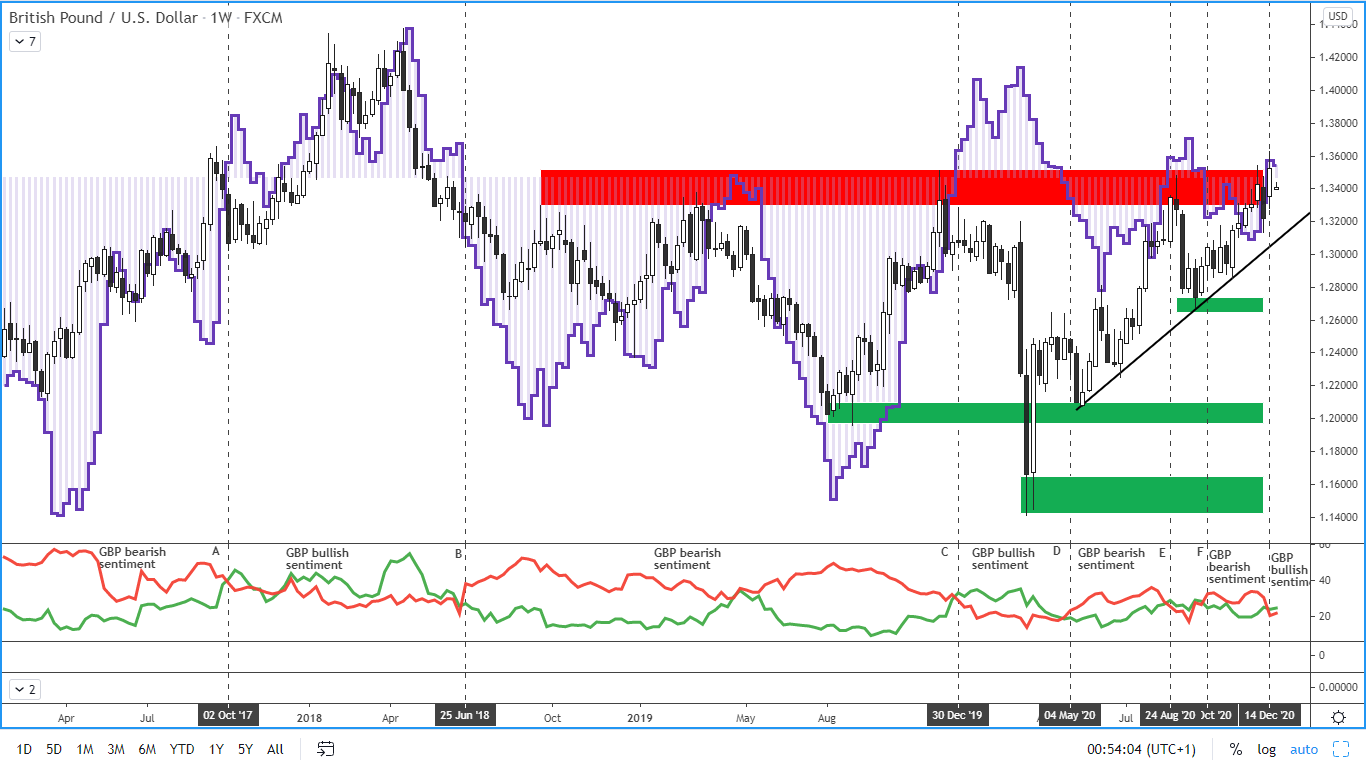 Figure 3: The GBP and COT positions of large speculators on a weekly chart
Figure 3: The GBP and COT positions of large speculators on a weekly chart
Also in the pound the price is at a strong level of resistance, from which the price rebounded downwards when the week opened with a large bearish gap. Price reacts strongly to the events surrounding Brexit. The agreement has not been concluded yet despite the fact that there is very little time left. New restrictive measures against coronavirus also contribute to the decline in the pound.
Last week, total net positions fell by 1,700 contracts. This change is the result of a decrease in net long positions by 4,200 contracts, while net short positions decreased by 2,500 contracts.
Note: we have plotted inflection points in the chart and it can be seen that in some cases the price development did not react according to sentiment. For example, in segment D, where we can notice that although the total net positions were in bullish territory, i.e. that long contracts prevailed, but the price fell down. In this case, it happened that the total net positions at that time were in extreme value, for which the trend may reverse. In addition, the price reached previous resistance.
Long-term resistance: 1.35-1.3620. Here, the price has been tested 3 times.
Long-term support: 1.2650-1.2750
The Australian dollar
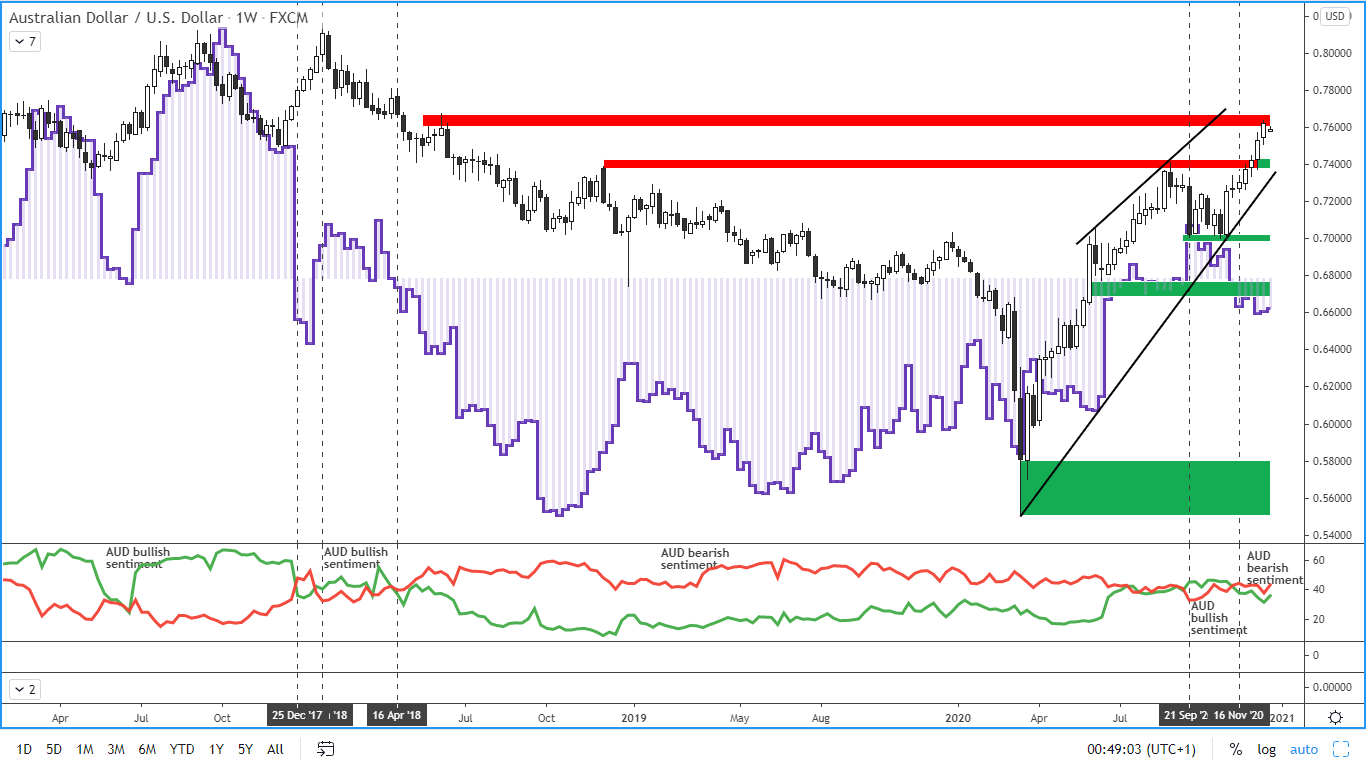 Figure 4: The AUD and COT positions of large speculators on a weekly chart
Figure 4: The AUD and COT positions of large speculators on a weekly chart
Total net positions are in bearish sentiment in the Australian dollar for the 7th week. Last week, total net positions were increased by 800 contracts. This change is the result of a decrease in net long positions by 4,900 contracts, while net short positions decreased by 5,600 contracts.
The Australian dollar is moving in a rising trend on the weekly chart and approached resistance at 0.7650 last week.
Long-term resistance: 0.7600-0.7650.
Long-term support: 0.7380-0.7420
The New Zealand Dollar
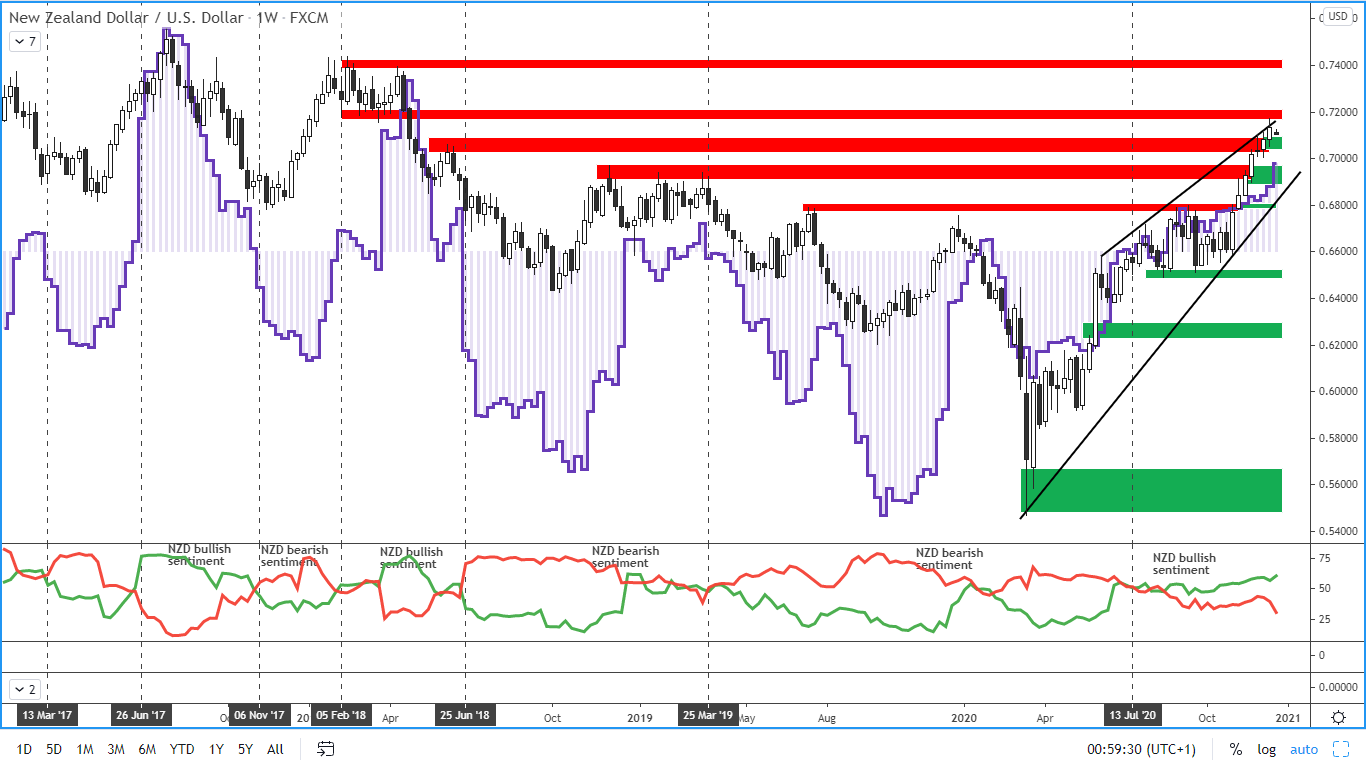 Figure 5: The NZD and the position of large speculators on a weekly chart
Figure 5: The NZD and the position of large speculators on a weekly chart
Total net positions in the New Zealand dollar are still in bullish sentiment, which has been going on since August 17, 2020. Last week, total net positions rose by 3,700 contracts. This change is the result of a decrease in net long contracts by 6,000 and a decrease in net short contracts by 9,700 contracts.
The price of the NZDUSD reached the resistance level of 0.7170 last week, at which a reaction happened.
Resistance: 0.7150-0.7200
The nearest support: 0.6920-0.6970
Trade the EURUSD, GBPUSD, and other currencies today!
Your capital is at risk.